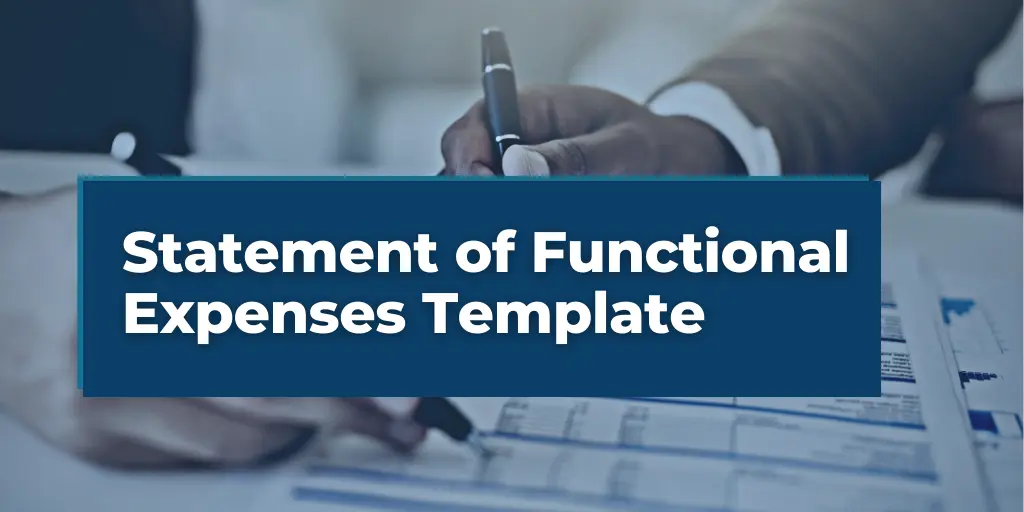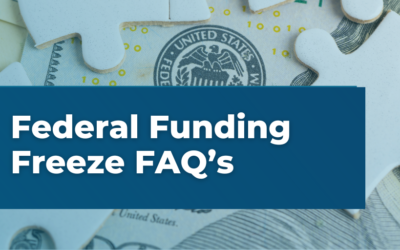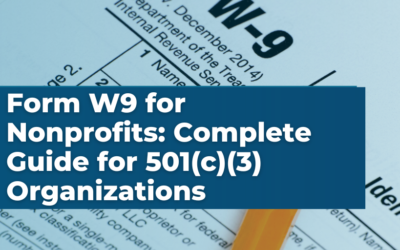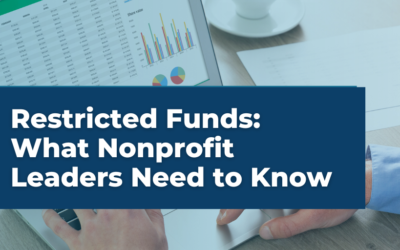Managing and presenting financial information accurately is essential for any organization. For nonprofit entities the statement of functional expenses (often referred to as a SOFE) is not just crucial; it’s often mandatory. This statement provides a breakdown of how expenses are allocated across various functions within the organization, offering transparency and accountability to stakeholders. In this blog post, we’ll delve into the details of a statement of functional expenses, explain why it’s important, and provide you with a comprehensive template to simplify the process.
What is a Statement of Functional Expenses?
Simply put, a statement of functional expenses offers a detailed view of how a nonprofit organization’s funds are allocated across different functional categories. Primarily used by nonprofits, this statement categorizes expenses to showcase the reasons behind the financial outflows, thereby aligning them with the mission and objectives of the organization.
The statement typically includes 3 main categories (though may differ depending on the structure of a nonprofit):
Program Services: Representing the heart of a nonprofit, this category details expenses directly tied to the primary activities or services undertaken to fulfill the organization’s mission.
Management and General: This category encompasses the foundational expenses that allow the nonprofit to function effectively. It encapsulates costs such as executive salaries, office rent, utilities, and other critical overheads that ensure the organization’s smooth operation.
Fundraising: As the lifeblood of most nonprofits, fundraising requires resources. This category lays out expenses involved in sourcing funds, from organizing events to donor outreach and promotional campaigns.
With this categorization, stakeholders, including donors, board members, and even the general public, gain a clearer picture of the organization’s financial operations. They can discern how their funds or contributions influence and drive the different facets of the nonprofit.
To further aid comprehension, the document typically includes supplementary notes. These annotations delve deeper into each category, elucidate the specifics of the programs, and illuminate the nature of the expenses, enabling a comprehensive understanding of the financial data.
In the U.S., this isn’t just a good-to-have; it’s a must. Nonprofit organizations are mandated by the Generally Accepted Accounting Principles (GAAP) and Internal Revenue Service (IRS) regulations to prepare and present a statement of functional expenses. This requirement upholds the principles of transparency, accountability, and exemplary financial stewardship in the nonprofit realm.
Who uses a Statement of Functional Expenses?
At any point in time, a stakeholder can ask for transparency and accessibility to a nonprofit’s financials. Having the statement ready allows for this to be done quickly and easily.
Donors and Grantors: Individuals, foundations, corporations, and the government are some of the main funders for nonprofits. Reviewing the statement gives them a transparent view of how their contributions drive the nonprofit’s various efforts.
Board Members: For those steering the nonprofit’s direction, the SOFE acts as a financial compass, ensuring informed decisions and effective organizational oversight.
Management and Leadership: Key figures like the CEO, CFO, and executive director harness the SOFE to gauge the financial efficiency of different activities. It’s a vital tool for strategic decision-making, budgeting, and program development.
Internal Stakeholders: Employees—especially those in finance, program development, and fundraising—rely on the statement to monitor expenses, ensuring resources target the organization’s mission and objectives.
Regulatory Agencies: Compliance with governmental financial regulations is non-negotiable for nonprofits. The SOFE provides these agencies with a deep dive into the nonprofit’s financial behaviors and allocations.
Auditors: Ensuring financial accuracy and compliance is an auditor’s mainstay. They use the SOFE as a key reference, ensuring expenses align with accounting standards.
General Public: Transparency fosters trust. By sharing their SOFE, nonprofits signal responsible financial management and adherence to ethical standards to the wider community.
Why use a Statement of Functional Expenses?
The statement of functional expenses is a critical tool for nonprofits, detailing their expenses across various functional categories. It provides an insightful lens into how an organization manages its finances, ensuring transparency, accountability, and strategic allocation of resources.
Building Trust through Transparency: The SOFE clarifies how nonprofits allocate their funds across different programs and functions. Such transparency can strengthen trust among stakeholders, from donors and board members to the general public.
Ensuring Accountability: With a clear breakdown of expenses, nonprofits can showcase their commitment to diligent financial management, ensuring every penny is spent in alignment with their mission.
Strengthening Donor Relations: Donors and grantors, before investing, often seek clarity on financial allocations. The SOFE aids in this, highlighting how their contributions would further the organization’s goals.
Strategic Decision-Making and Board Oversight: Nonprofit leaders harness the SOFE to make impactful choices about resource distribution and program strategies. Simultaneously, it grants the board a panoramic view of financial health, enabling them to fulfill their fiduciary responsibilities effectively.
Meeting Compliance and Enhancing Grant Applications: Regulatory bodies demand meticulous financial reporting. The SOFE not only ensures compliance but can also be a pivotal component in grant applications, showcasing the organization’s financial prudence.
Engaging with Stakeholders: From staff and volunteers to beneficiaries, nonprofits engage with a myriad of stakeholders. The SOFE acts as a lucid, organized medium to disseminate financial data.
Historical Analysis for Improved Outcomes: By comparing SOFEs over the years, nonprofits can discern spending trends, evaluate program success, and recalibrate for enhanced financial performance.
Bolstering Public Perception: In an era where transparency is paramount, openly sharing financial breakdowns through the SOFE can elevate a nonprofit’s image, drawing supporters and collaborators who prize accountability.
Expense Types Included in the Statement of Functional Expenses
Each statement of financial expenses should have various categories of financial outflows a nonprofit incurs. These categories, such as salaries and benefits, occupancy and utilities, and professional fees, provide a detailed breakdown of how the organization allocates its funds. This categorization ensures transparency and allows stakeholders to understand the financial activities related to a nonprofit’s mission and objectives.
Salaries and Benefits: This encompasses the compensation provided to employees. It includes those directly involved in delivering programs, those in administrative roles, and those engaged in fundraising activities.
Occupancy and Utilities: All costs associated with maintaining and running a physical space fall under this category. It includes expenses such as rent, electricity, water, and other facility-related charges.
Supplies and Materials: This category accounts for items consumed in the day-to-day operations of the organization. It covers program-specific materials, routine office supplies, and any other essential consumables.
Professional Fees: These are fees paid for specialized services. Examples include legal advice, accounting services, external consulting, and any other professional expertise sought by the organization.
Advertising and Promotion: All expenses aimed at enhancing the organization’s visibility and promoting its cause are included here. This includes costs associated with marketing campaigns, creation of promotional materials, and public relations initiatives.
Other Expenses: This is a catch-all category for any expenses that don’t fit clearly into the previously mentioned categories. It ensures that all financial outflows are captured in the statement.
Creating a Statement of Functional Expenses: A Template
A statement of functional expenses requires a clear layout and structured presentation to ensure its effectiveness and ease of interpretation. The goal is to get the right information to the right individuals in a quick, succinct manner. To simplify the process, here’s a template that you can follow:





